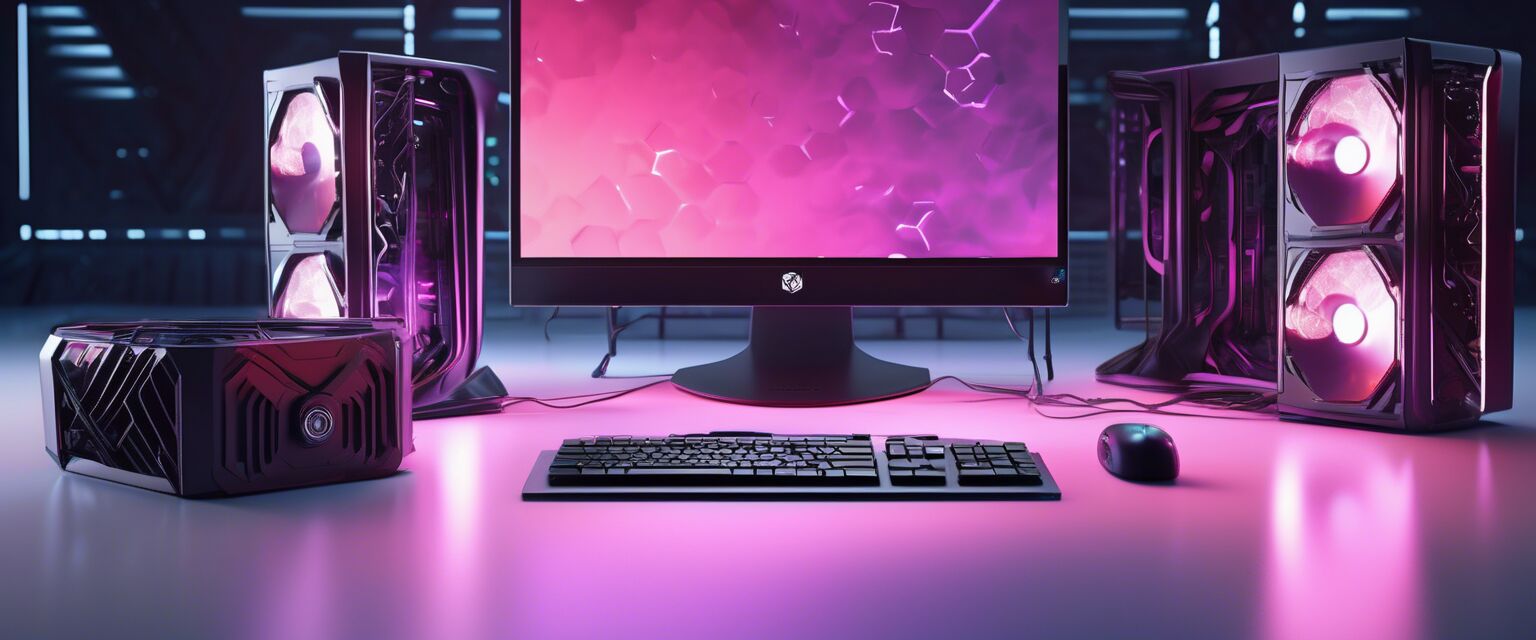
Innovations in Desktop PC Design for 2025
Key Takeaways
- Desktop PCs are becoming more compact and modular, enhancing customization and functionality.
- Miniaturization is a major trend, allowing for smaller and lighter models without compromising performance.
- Emerging design trends include eco-friendly materials and improved thermal management systems.
- Consumer demand for aesthetics is influencing design choices, leading to PCs that are visually appealing.
- These innovations are reshaping the future of personal computing.
As we dive into the exciting world of desktop PC innovations, 2025 promises to showcase groundbreaking design elements. Advances in technology are enabling manufacturers to rethink how desktop PCs are built, focusing not only on performance but also on enhancing user experience through innovative design. This article explores key trends such as miniaturization, modularity, and the use of sustainable materials that will define the desktop PCs of the near future.
Key Trends in Desktop PC Design
| Trend | Description |
|---|---|
| Miniaturization | Reduction in size while increasing power, leading to compact systems that fit in almost any workspace. |
| Modular Components | Finding ways to allow users to easily upgrade and change specific parts, extending the life of the PC. |
| Eco-Friendly Materials | Use of recyclable and sustainable materials to reduce the environmental impact of PC manufacturing. |
| Improved Thermal Management | Innovative cooling systems that prevent overheating while maximizing aesthetic appeal. |
| Aesthetic Customization | PC designs that allow for personalization through colors, RGB lighting, and customizable cases. |
Miniaturization: A Trend Toward Compactness
The miniaturization of desktop PCs is changing how users interact with their devices. In 2025, we expect to see even more powerful components that can fit into smaller housings. The development of hardware that retains high-performance levels while being compact is a game-changer. Here’s why miniaturization matters:
- Space efficiency: As homes and offices become smaller, compact PCs can fit into various environments without sacrificing functionality.
- Portability: Lighter devices offer the flexibility for users to move their PCs around easily, promoting versatility.
- Energy efficiency: Smaller components often consume less power, contributing to lower energy bills and a smaller carbon footprint.
Modular Design: Personalization and Longevity
The rise of modular desktop PCs allows users to customize their systems easily. This flexibility can lead to greater user satisfaction as they can select components based on their unique needs.
Pros
- Easy upgrades: Users can replace or upgrade individual components without needing to buy a new system.
- Cost-effective: Lower long-term costs by not having to replace the entire unit to keep pace with new technology.
- Personalized performance: Users can create a system optimized for their specific tasks, whether gaming or graphic design.
Cons
- Initial cost: Modular parts can be more expensive upfront compared to traditional systems.
- Compatibility issues: Not all components may be compatible with one another, which can create confusion for some users.
Eco-Friendly Design Elements
Sustainability is becoming a core principle in technology, and desktop PCs are no exception. From using recycled metals to biodegradable materials, eco-friendly designs are gaining traction. Here are some ways the industry is focusing on sustainability:
- Using sustainable materials like bamboo and recycled plastics in constructing PCs.
- Reducing energy consumption during the manufacturing process by adopting greener practices.
- Implementing take-back programs to ensure responsible recycling at the end of life.
Improved Thermal Management Systems
As components become more powerful, maintaining optimal operating temperatures is crucial. Innovative thermal management systems are being designed to ensure longevity and reliability:
| System | Benefits |
|---|---|
| Liquid cooling | Efficient heat dissipation with less noise compared to traditional fans. |
| Smart fans | Fans that dynamically adjust their speed based on temperature readings, conserving energy. |
| Heat pipes | Utilize phase change materials to maximize heat distribution and cooling. |
Purchasing Considerations for 2025
As consumers look forward to purchasing new desktop PCs in 2025, it's essential to consider a few key aspects:
- Understand your needs: Know what applications you will be running to choose the right specifications.
- Look for energy-efficient models: Consider options that not only perform well but are also energy efficient.
- Check for upgradeability: Ensure the desktop you choose allows for component upgrades in the future.
- Read user reviews: Engage with current users to get insights into their experience with specific models.
For a more in-depth look into different types of desktop PCs, head over to our desktop PCs collection.
Conclusion
As we approach 2025, desktop PCs are getting an exciting overhaul with innovative design trends that prioritize functionality, environmental responsibility, and user-centered customization. By embracing these trends, consumers can enjoy better performance, tailored experiences, and contribute to a more sustainable future in technology. Stay tuned for more updates in our News and Trends section for everything evolving in the realm of PCs.